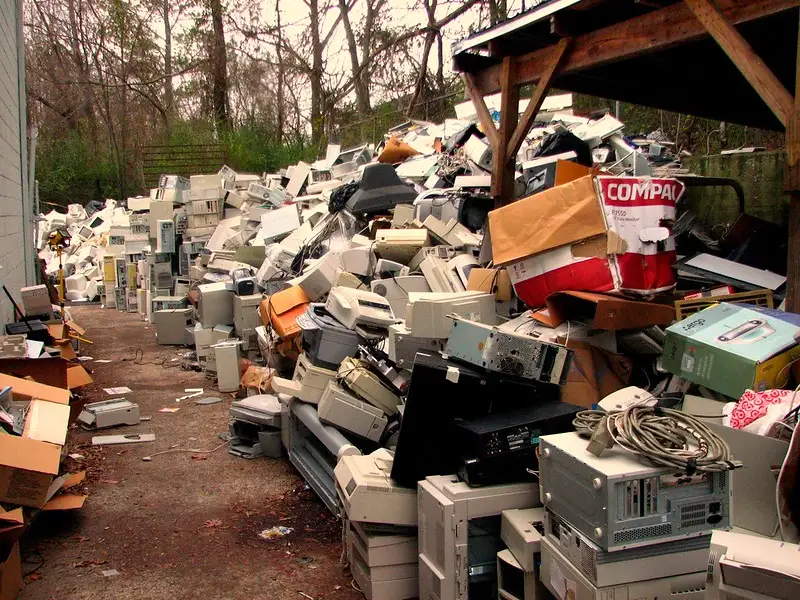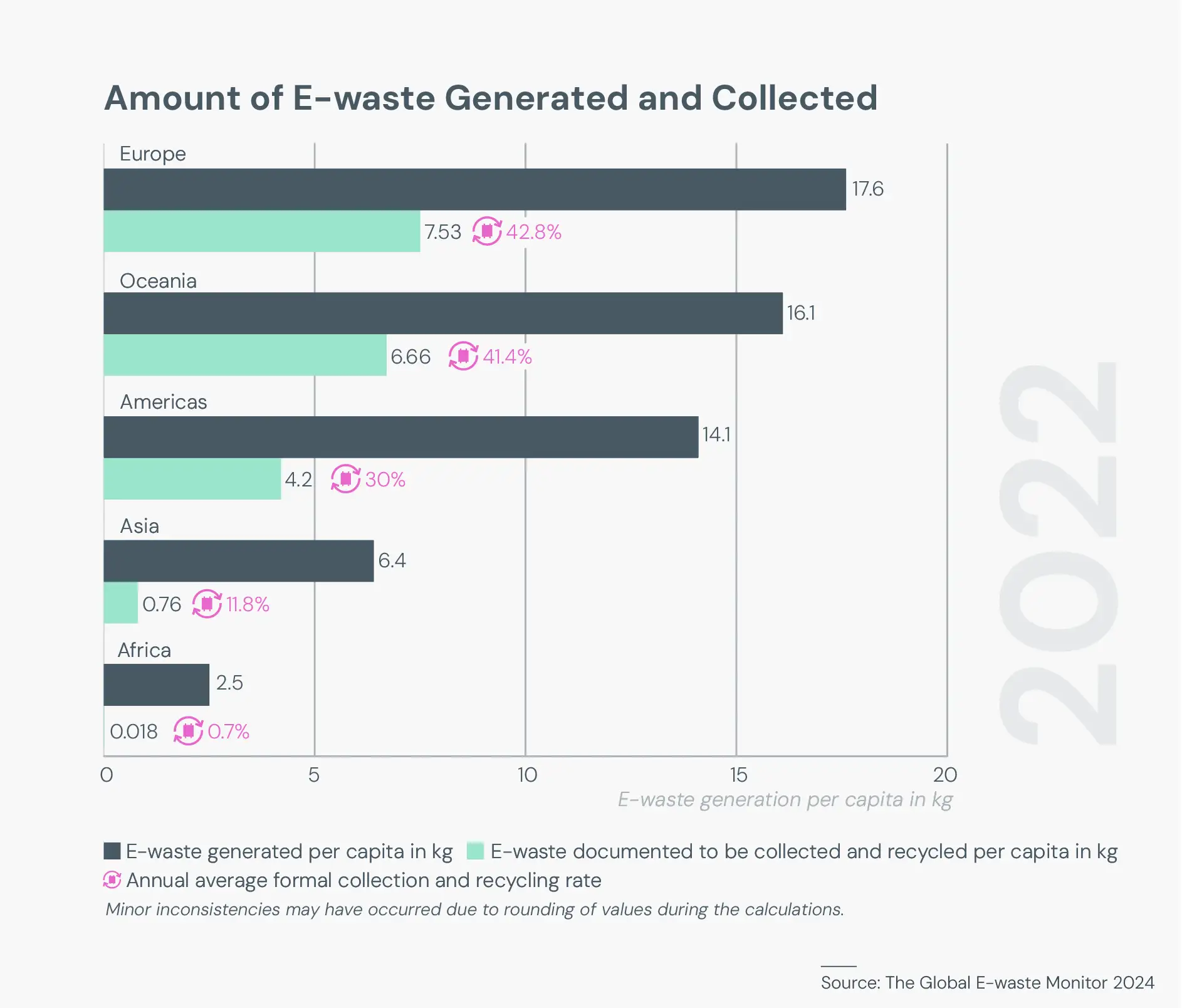E-Waste Recycling: Addressing the Issue from the Wrong End

As the digital economy expands, so does its technological waste—a critical issue I've been highlighting since 2007. In 2022, a record 62 million tonnes of e-waste was produced, marking an 82% increase from 2010. This staggering volume of waste underscores the immense challenge we face. Computers and other devices demand a plethora of resources, including rare earth elements, each new device necessitating further extraction from the Earth. This reality presents a significant environmental dilemma.
Many PC manufacturers tout recycling as a universal solution. Yet, this perspective is not only overly simplistic but also problematic. It shifts the responsibility onto end consumers to manage waste and neglects the fact that no device is fully recyclable, with only 60% of materials potentially recoverable.
Consider this astonishing figure from Josh Lepawsky, uncovered in an insightful podcast:
A single copper mine in Chile produces more waste in a year than all of the post-consumer e-waste in the US and China combined. Reducing waste at this mine by just 1% would have a significant impact on reducing e-waste in the entire European Union.
Preventing IT device waste is crucial for sustainability. Questions arise:
- Why are smartphones often replaced within 1-2 years?
- Why do computers have chip capacities far beyond what most applications require—unless inefficient software necessitates excessive hardware resources?
- Moreover, why are so many devices designed to hinder even the simplest repairs?
Despite a worldwide shift toward cloud computing, a recent study in China disclosed another issue: as of 2022, 42 percent of servers in data centers remained unmounted and unused. This is particularly ironic when cloud technology is intended to improve the utilization of ICT resources.
There is an urgent need for smarter software solutions that genuinely inform users about the actual necessity and benefits of the latest gadgets. Imagine being able to track your CO2 emissions for your digital lifestyle. Or if Apple or Samsung outline what you truly gain from purchasing a new phone. The reality is that real advancements in personal computers, relative to what is actually needed by most users, have been minimal in recent years. This stands in stark contrast to the lofty claims made by manufacturers. This discrepancy underscores the pressing need for a paradigm shift in how we produce, consume, and conceptualize our technological devices and their life cycles.
Some more interesting insights from the Global E-waste Monitor 2024:
- Europe has the highest e-waste per capita, with 17.6 kg per person, but also has the highest formal collection and recyling rate at 42.8%.
- Asia generates much less e-waste per capita at 6.4kg. This is three times less than Europe, but the recycling rate is four times lower than in Europe.
- The e-waste generated in 2022 contained 31 billion kg of metals, 17 billion kg of plastics and 14 billion kg of other materials (minerals, glass, composite materials, etc.)
- 5.1 billion kg of e-waste is shipped across borders, which is 8% of the total e-waste generated globally.

| Global E-waste | E-waste Streams | Billion kg | Percentage |
|---|---|---|---|
| E-waste generated globally in 2022 | 62.0 | 100% | |
| Formally collected and recycled | 13.8 | 22% | |
| Collected and recycled outside formal systems in high- and upper-middle-income countries | 16.0 | 26% | |
| Handled in low- and lower-middle-income countries with no developed e-waste management infrastructure, mostly by informal sector | 18.0 | 30% | |
| E-waste disposed of as residual waste, majority landfilled globally | 14.0 | 22% | |
Source: UNITAR